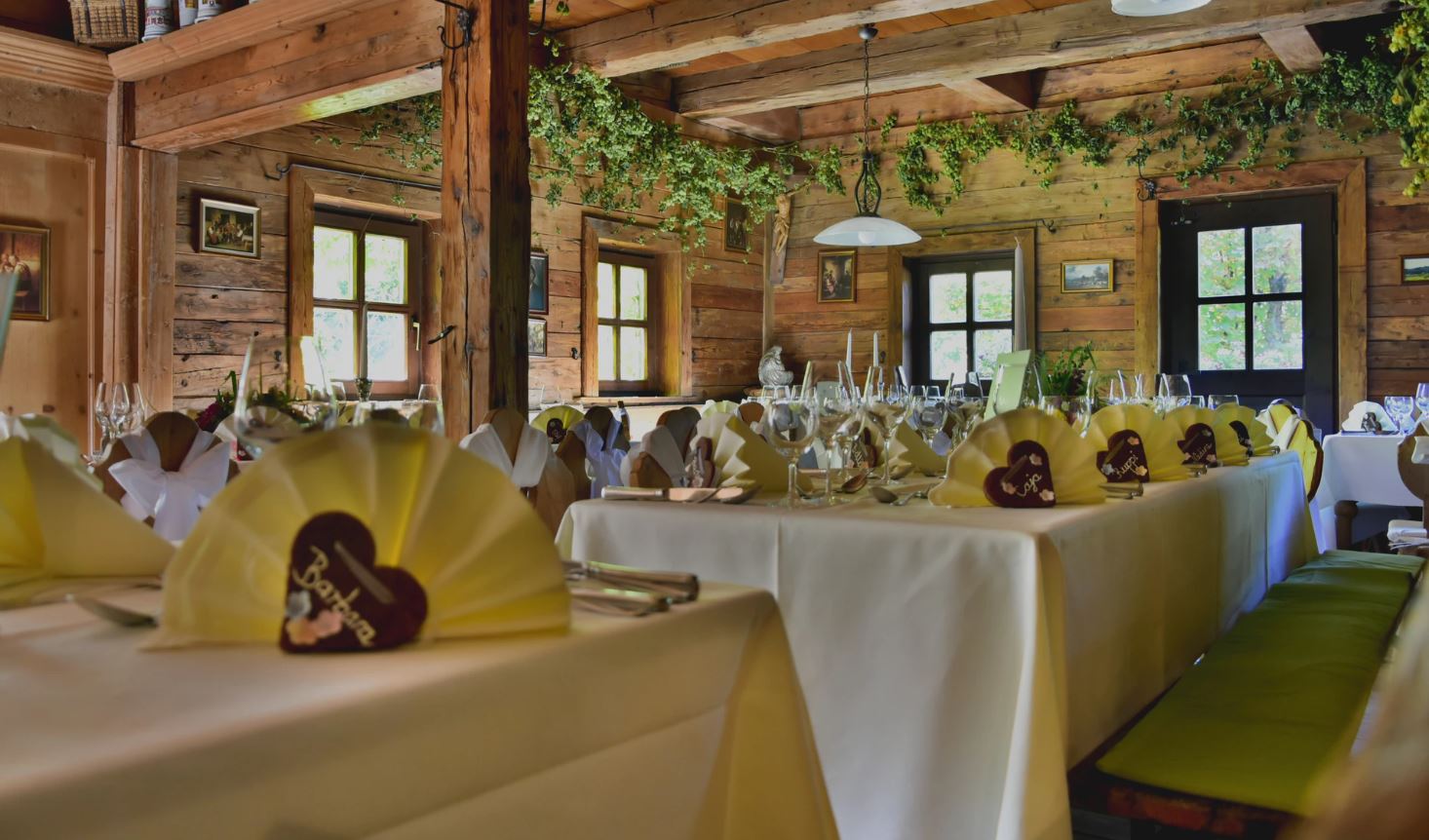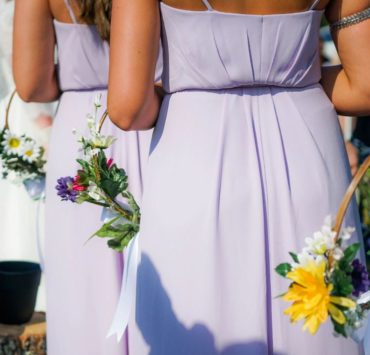After your wedding ceremony, the reception has to follow. Aside from the food, there’s also going to be wedding traditions, speeches, games, and other wedding customs practiced in your families. But, what exactly are the things to include in a wedding reception program flow and how do you order it?
If you hired a wedding planner to organize the reception venue and the rest of your wedding suppliers (you can find the complete list on our ultimate wedding guide article), your wedding planner or the host you hired can help you create a program flow. But if you want to build your own wedding program reception, here’s a basic sample.
Standard Filipino Wedding Reception Program Sequence:
- Pre-reception: Cocktails, Snacks, and Guest Ingress
- Registration
- Opening Remarks
- Introduction of Wedding Entourage
- First Dance / Dance with Parents
- Wedding Toast
- Thanksgiving Prayer
- Dinner & Photos
- Prenup Photos/Videos
- Cake Cutting
- Wedding Speeches
- Intermission Numbers
- Wedding Games
- Money Dance
- SDE Video
- Closing Remarks from Bride and Groom
- After Party
Pro-tip: Distribute copies of your wedding program script or flow to your guests. No matter how simple or grand your wedding is, it’s important to manage the expectations of your guests and make sure they know what’s going to happen during the wedding reception program.
Now, let’s get down to the nitty-gritty of each part of the wedding reception sample.

Pre-reception: Cocktails, Snacks, and Guest Ingress
After a ceremony, there’s bound to be some time between after the ceremony and before the reception begins. During that time, you, your partner, your close family members, and your wedding entourage will be taking photos and possibly getting changed into your reception outfits, if applicable.
If your ceremony venue is far from your reception venue, your guests will probably start heading for the reception ahead of time. Those who did not attend the ceremony but plan on attending the reception will also start heading to the second venue.
While waiting, it might be nice to prepare refreshments and light snacks at the reception venue to keep your guests sated until dinner. Dinner is usually towards the middle of the wedding reception program, and keeping them hungry and thirsty until then could make them cranky or too distracted for the events before dinner. So, plan accordingly.
Registration
Most wedding receptions have a seat plan to account for everyone invited and in case caterers need to find a specific guest with special dietary needs. For less formal affairs, guests are grouped according to table numbers and can sit next to anyone they want as long as they’re specifically on that table.
Registration allows guests to sign at the guest book (which can be a nice keepsake for after the wedding to read your guests’ well-wishes) and for them to find their respective seats or table number. Registration is often done by hired ushers (some wedding venues provide this), your wedding planner’s team, or bridesmaids and groomsmen acting as ushers.
Opening Remarks
The bride, groom, and the rest of their wedding entourage should be at the reception venue by the time the reception is scheduled to start. The wedding host (either a professional host or a friend) will take over the reception. They’ll ask the guests to settle down and find their seats before starting the program. In a traditional wedding reception program or script in the Philippines, more religious families may want to start with a prayer usually led by a family member or someone close to the bride and groom.
The wedding host will greet the guests and then acknowledge the parents (especially if the parents contributed to some or all of the wedding expenses) and principals sponsors. If the couple has a hashtag, they will encourage the guests to use it when uploading photos to social media. This will make it easier for the bride and groom to easily look at their guests’ photos after the wedding reception program.
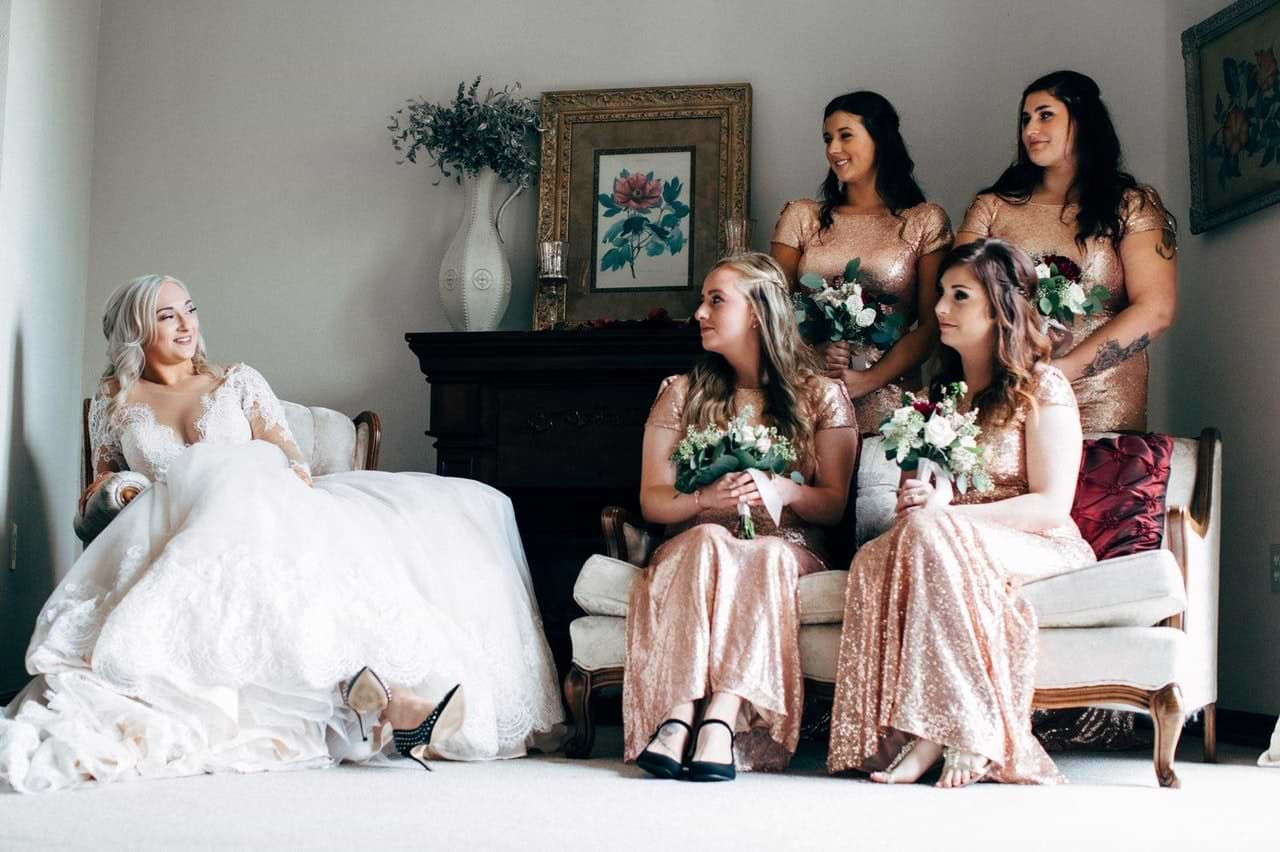
Introduction of Wedding Entourage
Prior to this, you, your partner, and your entourage should be outside waiting for your grand entrance. The wedding host will start by introducing the secondary sponsors, followed by the bridesmaids, the groomsmen, the maid of honor, and then the best man.
Finally, the wedding host will announce you and your spouse. This is your grand entrance: it will be your first appearance as husband and wife, so don’t be afraid to go all-out. If you want, you can have confetti or flower petals to shower your entrance or a montage of your engagement photos.
First Dance / Dance with Parents
Right after your grand entrance, the wedding program flow is followed by the family dances. First, the groom will dance with his mother followed by the bride and her father. After the father-daughter dance, the father will give the bride to the groom to have their first dance.
If the mother of the groom and father of the bride is absent, there’s no rule that stops you from dancing with maternal and paternal figures in your life instead. Also, try to keep each dance to two to three minutes long. It may not seem like a long time, but if you’re not a professional dancer or didn’t really rehearse a first dance performance, this can feel like a long time. It’s also a long time for your guests, especially since they’re starting to get hungry.
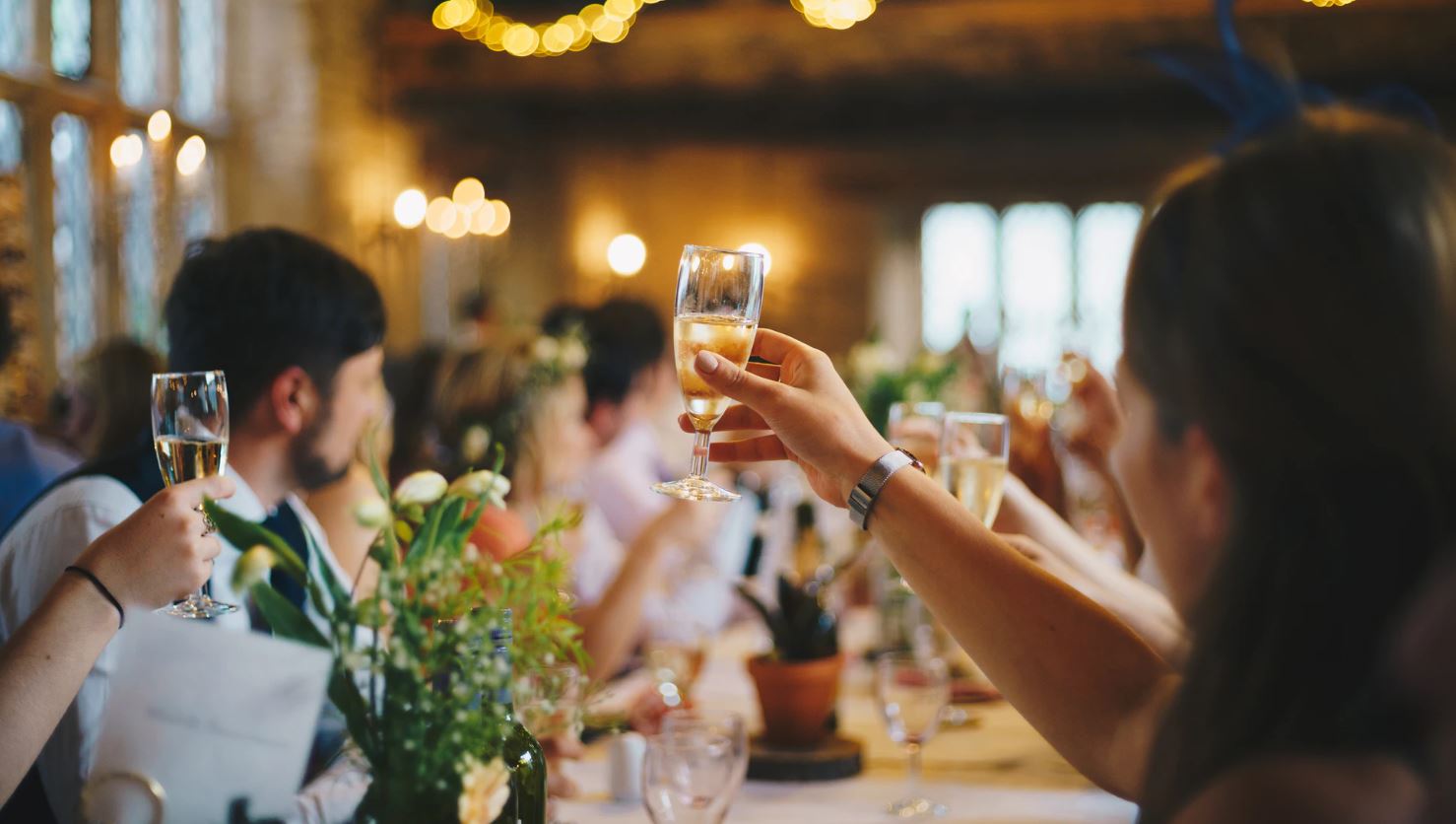
Wedding Toast
To signal you’re nearing the meal, it’s time for the traditional toast. If there is alcohol at the wedding, the waiters will go around serving alcohol to all the adults. Usually, the best man, father of the groom, or father of the bride lead the toast. In a Filipino wedding reception program, it’s either one of the fathers of the bride or groom, usually whoever paid more for the wedding.
Traditionally, the order of the wedding reception toast goes like this:
-
- The best man toasts the bride.
- The maid/matron of honor toasts the groom.
- The financier of the wedding toasts the couple.
- Other parental figures of the couple toast the newlyweds.
- The couple toasts their family and guests.
Of course, you can arrange the order and the people giving the toasts to your preference. What matters is that the people who give them will give your and partner warm emotions that will have a long-lasting impact. After all, the purpose of a wedding toast is to honor the couple that’s about to spend the rest of their lives together.
Thanksgiving Prayer
In a traditional Filipino wedding reception program, there’s usually a Thanksgiving Prayer before the meal. There’s no rule as to who leads the prayer. It can be your host, one of your family members, yourselves as a newly married couple, or even a little niece or nephew for an added cuteness factor! What’s important is that the prayer asks God to bless the couple in their marriage, bless all of the attendees, thank God for the food everyone’s going to eat, and thank all of the people who prepared the food.
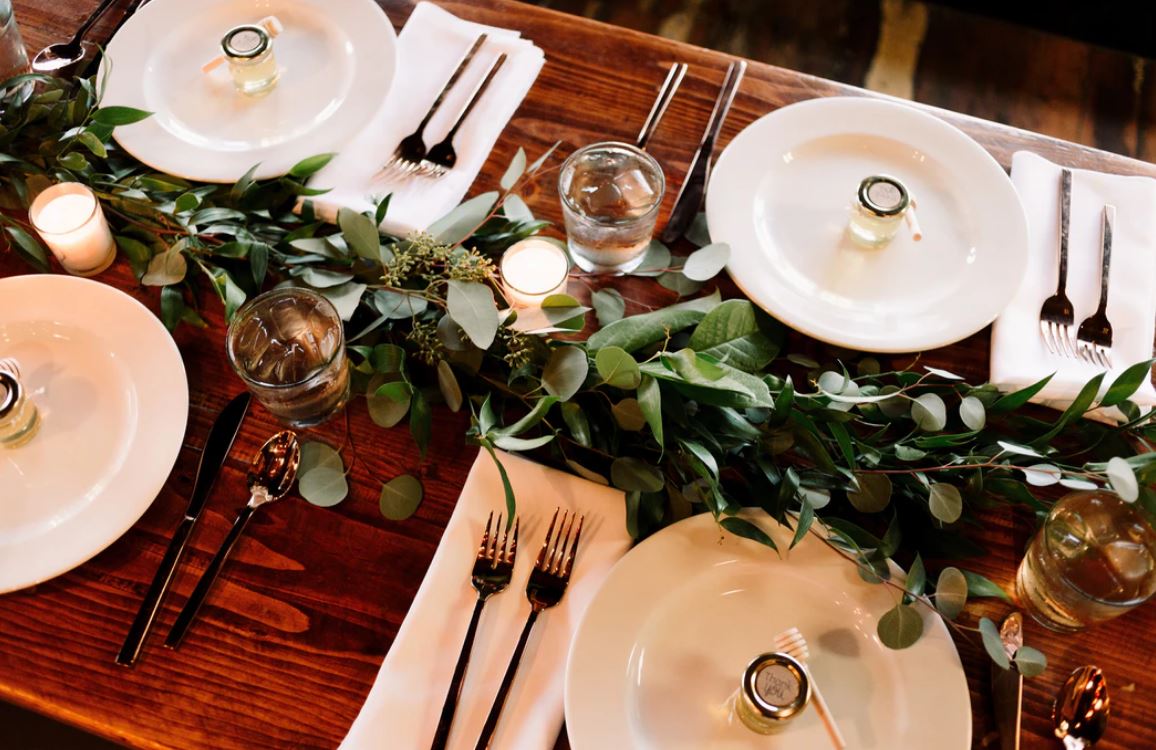
Dinner & Photos
After a short prayer (optional), the wedding program flow transitions to the meal of the event. If it’s a sit-down dinner, the host will ask people to take their seats while waiters start serving food. A bride and groom can also eat during this time, but if they want to go around taking photos at different tables, they might have to cut a few courses or eat faster. They may also want to eat before the event starts.
On the other hand, if it’s a buffet line, you could ask each table to stand up to take pictures with you and your spouse at the front before heading to the buffet lines. This ensures an organized line for everyone. Because once everyone is served, it may be difficult to catch everyone at the same table when you and your spouse go around for photos. Just make sure there’s enough food to go around so your caterer doesn’t run out of food for the last few tables.
Prenup Photos/Videos
Towards the end of dinner, you can stop the music to play montages of your pre-nup photos and videos. Most couples also present a video that shows them growing up through the years.
If you have family members or friends who couldn’t make it to your wedding but sent videos of well-wishes, you can also play the video during this part of the wedding reception program. This is a good way to transition your program from dinner to the next part of your wedding’s events.
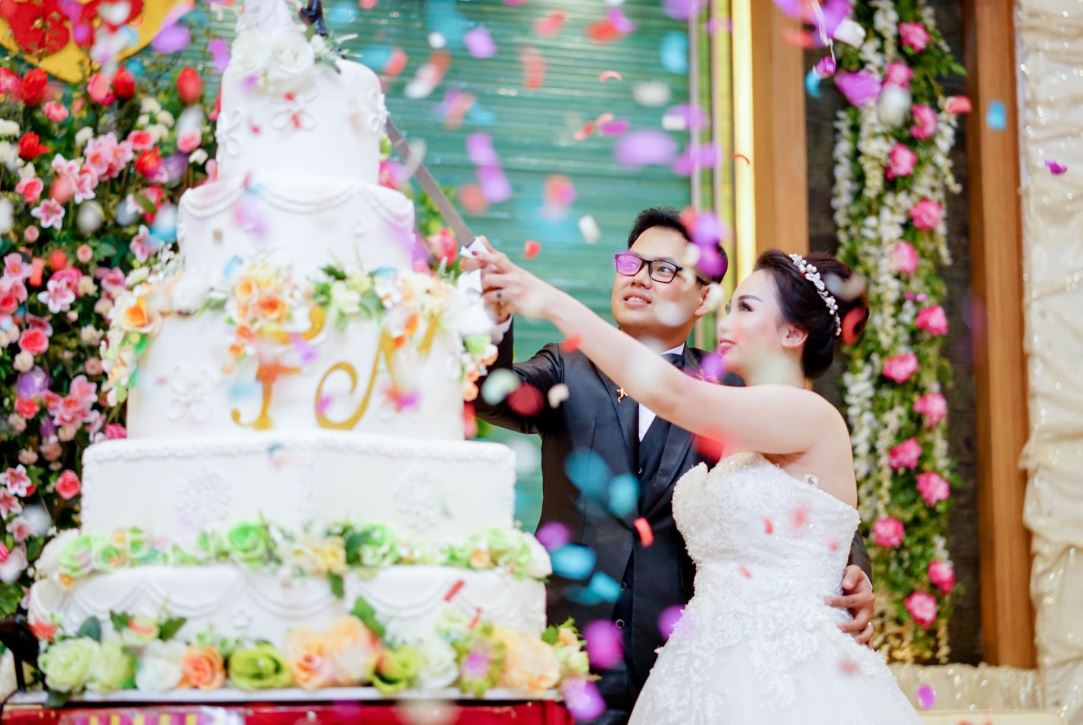
Cake Cutting
You and your partner will now cut your wedding cake together. Along with the bouquet toss and first dance, this charming tradition in a wedding reception program is one of the photo opportunities that grace every wedding album.
After you slice the cake, you will have to feed each other a small bite of the cake. This can be sweet and romantic, symbolizing a commitment to provide for one another. It also shows your love and affection as a couple.
After making the first slice and feeding each other, your waiters or caterer will portion the rest of the cake and serve it to the rest of your guests during the next part.
Wedding Speeches
As much as possible, keep speeches to below five minutes per person (and even less if you have more than four people giving speeches). In a traditional wedding reception program script in the Philippines, speeches at this portion come from the best man, maid of honor, father of the bride, and father of the groom. However, if other friends and family want to talk, you can let them. Your host will introduce each speaker and how they’re related to you.
Intermission Numbers
Do you have any talented nieces or nephews who can prepare a dance number? Or perhaps a college friend who’s won singing contests in the past? You can have them perform during your wedding reception program! Not only will it make them feel involved during your special day, they’ll also get to share their talents with other people and entertain your guests at the same time. If they especially love performing in front of an audience, it’s a win-win situation for everyone.
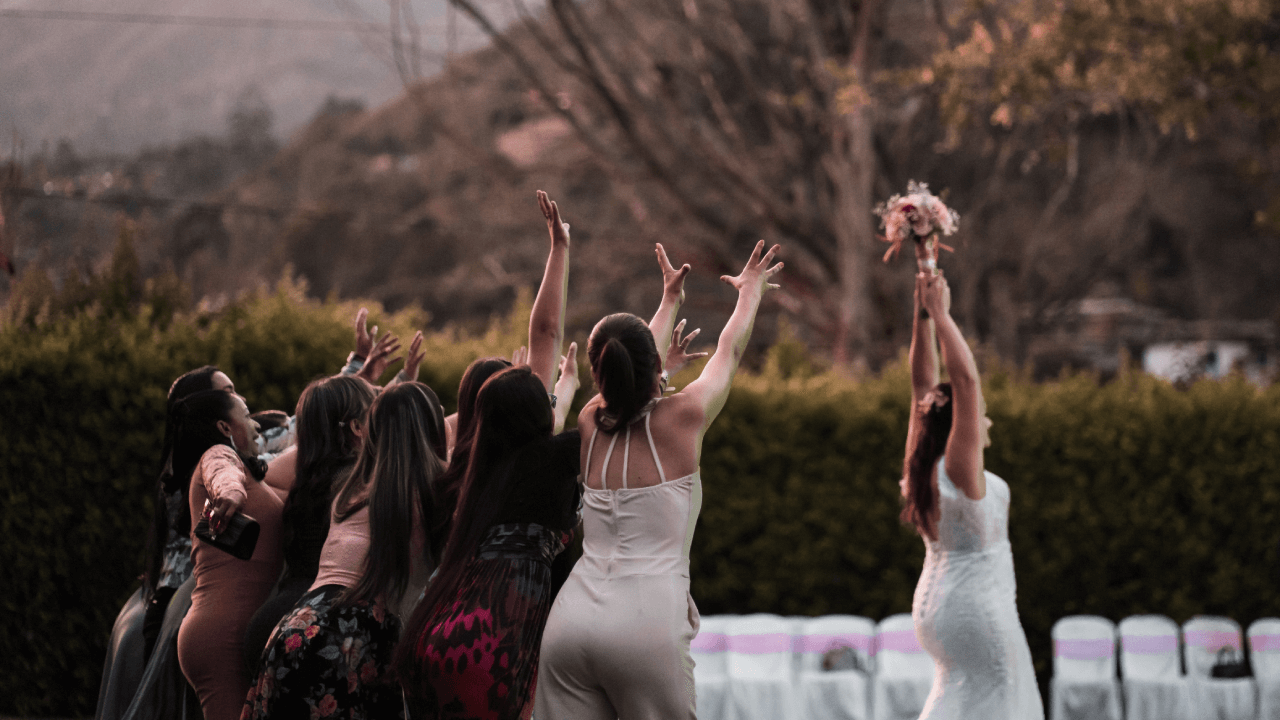
Wedding Games
These are the optional and less formal traditions and wedding games often used in receptions. However, if you don’t feel like doing these games or coming up with your own, you can always skip this part. Some games include:
- Bouquet toss for all the single eligible female guests
If you’re excited about having your guests participate in your wedding reception program, this could add something extra to your soiree. There are also plenty of ways to reinvent this custom. You can break your bouquet apart and give each of your best girl friends a bloom. - Garter toss for the single eligible male guests (a bit inappropriate if you have children in the party, though)
In lieu of the bride’s garter, consider having the groom toss his boutonniere! - Games to show how well the guests know the bride or groom
You can give your host a list of trivia questions that they can read out during moments of lull in the wedding program flow. Whoever knows the answer can just raise their hand. This is a fun way for friends and family to get to know more about you as a couple. - Games for the bride and groom to show how well they know each other
Members from the audience can ask the bride and groom some personal (but non-invasive!) questions that they’ll have to answer. If one of them makes mistakes, they can do a consequence. - Spin the Wheel
Your host can pick a command from a bowl, read it aloud, and the couple can choose any of their guests to perform or act out the command. The commands can be anything from taking a selfie with the couple or singing a line from a love song. This is an entertaining game that can be done periodically throughout the night or during one segment of the wedding reception program.
Money Dance
The last of the traditions in a Filipino wedding reception program sequence is the money dance. This is a way to wish the couple a good life together by contributing some cash to get started. This can be done in two ways: male guests line up to dance with the bride and female guests dance with the groom, and all guests attach money on them while dancing. The second way is for the bride and groom to dance with each other while the guests pin money on their clothes.
SDE Video
At this point, if you opted for a same-day edit (SDE) video from your videographer, they should be done putting together a video ready for your guests to see. This is a video showing everything that happened throughout the day from pre-wedding preparations to events that only happened minutes ago.
Closing Remarks from Bride and Groom
To wrap up the wedding reception program, the bride and groom will give their speeches. Traditionally, their speeches are about their new spouse and then thanking their friends and family for being there with them. During this time, giveaways will be passed around as a thanks to their guests for attending their wedding.
After Party
The party and festivities usually don’t stop right after. If you have an open bar or a dance floor, this can be the time you can just enjoy yourselves with your friends and family.

Plan Your Wedding Reception Program Ahead of Time
The key to planning a wedding reception program that runs smoothly is planning ahead. Breaking it down weeks, even months, before your wedding day into an organized timeline will help keep everything on track when the big day finally arrives. The more detailed you can make the program, the better.
Hopefully, you can use the wedding reception sample we’ve outlined in this article as a guide to create your own wedding program flow. Additionally, to manage your guests’ expectations, don’t forget to give them a copy of your wedding reception program so that they’ll always know what happens next.
Lastly, make sure to plan out a wedding program flow that’s fun and meaningful for you! It’s your big day after all.

Author: Justine Lubag
Justine loves costumes, puns, horror films, and blue dresses. A literature graduate from the south, she writes online content for a living but is super shy about others reading her fan fiction.

